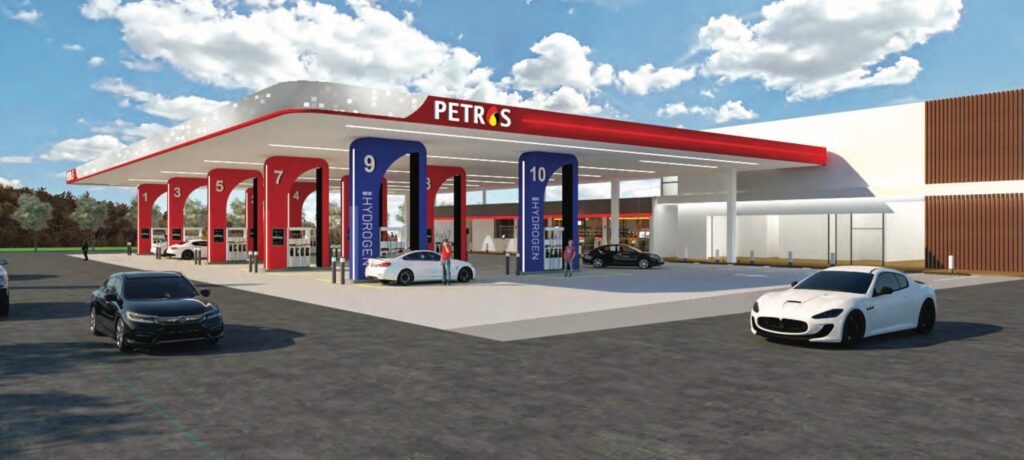Like other industries, the auto industry is committed toward achieving carbon neutrality in all its operations as well as products. This is crucial in addressing climate change which can have disastrous consequences on the planet if nothing is done to stop the increase in carbon dioxide emissions.
While the general view is that electrification of vehicles – and phasing out internal combustion engines – is the way to go, Toyota (and some other carmakers) believe that fully electric vehicles are not the only way. There must be a broader approach and the Japanese carmaker’s multi-pathway approach offers more ways towards decarbonisation which can more effectively applied in different countries and regions of the world.

Mobility solution demonstration
As the representative of Toyota in Malaysia, UMW Toyota Motor (UMWT) has been promoting the multi-pathway approach and, in collaboration with the Malaysian government, reinforces its commitment to a sustainable future. This was again highlighted at a hydrogen-powered mobility solution demonstration in Putrajaya.
At the session, Prime Minister Dato’ Seri Anwar Ibrahim had an opportunity to personally drive a Toyota Mirai, a fuel-cell electric vehicle (FCEV) which runs on hydrogen. He was accompanied by the Minister of Science, Technology, and Innovation (MOSTI), Chang Lih Kang.

The Mirai, which means ‘future’ in Japanese, is a production model on sale in certain countries. It is a representation of the potential and viability of hydrogen as a key component of Malaysia’s diverse and sustainable energy portfolio. This aligns with the strategic objectives of the National Energy Transition Roadmap (NETR) and Hydrogen Economy and Technology Roadmap (HETR), illustrating UMWT’s dedication to fostering a competitive hydrogen ecosystem and contributing towards achieving the nation’s carbon-neutral target by 2050.
This collaborative effort emphasises the importance of economic diversification and energy security in the nation’s strategy to diversify its energy sources. Reflecting the commitment of both public and private efforts to drive positive change and usher in a cleaner and greener future, the initiative will position Malaysia as a regional leader in embracing cutting-edge and environmentally conscious technologies.

“As a mobility company focused on advancing sustainable transportation solutions, UMW Toyota Motor is thrilled to play a part in this effort. This initiative strengthens our commitment to a multi-pathway approach to achieving carbon neutrality, aligning with Malaysia’s ambitious goal of becoming a carbon-neutral nation by 2050. Through this collaboration, we are excited to showcase the technological strengths of the Toyota Mirai which uses fuel cell technology to generate its own electricity, emitting nothing but water,” said Datuk Ravindran K., President of UMWT.
The Toyota Mirai FCEV
The Mirai driven by the Prime Minister is the second generation of the FCEV since it was first introduced in 2014. The sleek sedan uses a powertrain incorporating fuel cell technology which was originally developed for spacecraft.
![Toyota Mirai FCEV [2023]](https://www.motaauto.com/wp-content/uploads/2024/04/Toyota-Mirai-FCEV-2023-1.jpg)
The hydrogen, stored in 3 tanks, undergoes a chemical reaction in the fuel cell to generate electricity which is stored in a lithium-ion battery pack. The energy from the battery is then used to power the car which has a 128 kW electric motor. The increased efficiency of the latest fuel cell system, coupled with a 1 kg increase in hydrogen capacity, gives the Mirai a certified range of approximately 650 kms (a record was set when one unit achieved 1,003 kms in France).
![Toyota Mirai FCEV [2023]](https://www.motaauto.com/wp-content/uploads/2024/04/Toyota-Mirai-FCEV-2023-3-1024x530.jpg)

Green and sustainable fuel
Hydrogen for motorised vehicles holds much promise as a green and sustainable fuel and some carmakers have stepped up development of FCEVs and are running prototypes in real-world conditions. Nevertheless, the adoption of FCEVs will require setting up a hydrogen station network, which will take time.

The supply of hydrogen can come from within Malaysia as a hydrogen production plant is already operating in Sarawak. The state, which aims to be a hydrogen hub by 2027, announced late last year that it will be supplying green hydrogen to Japan in future. It is also running FCEVs such as the Mirai and has been running Southeast Asia’s first FCEV buses.
![Toyota Mirai FCEV at Purtrajaya [2024] Toyota Mirai FCEV at Purtrajaya [2024]](https://www.motaauto.com/wp-content/uploads/2024/04/Toyota-Mirai-FCEV-at-Purtrajaya-2024-696x464.jpg)
